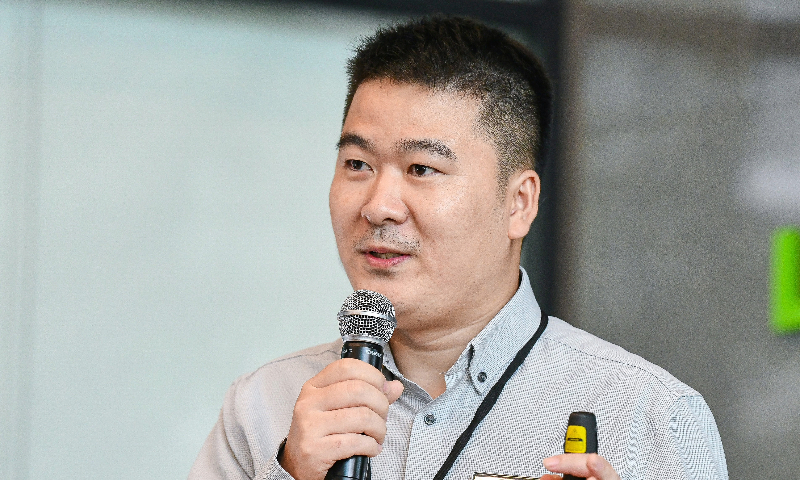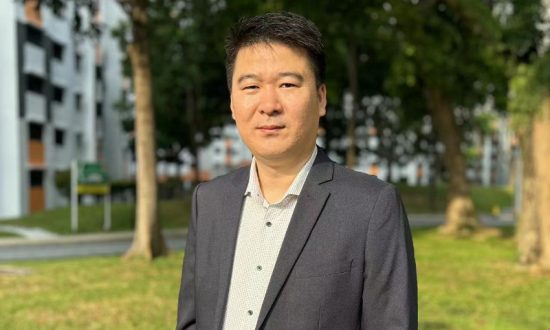Henry Shouheng Xu has 10+ years of work experience across engineering, startup, business management, innovations and strategy with a successful track-record in driving business growth, scaling up startups and building global innovation programs. He worked and lived across multiple regions and cultures including Singapore, the United States, Taiwan and mainland China.
Henry is a proven leader with a strong belief in innovation, integrity and inclusivity, constantly driving transformations in work through innovations and data-driven approaches. He is recognized for building collaborative and inspiring culture, enabling his team to perform at their full potential.
Recently, in an exclusive interview with Digital First Magazine, Henry shared his career trajectory, insights on how AI can make data centers greener and more sustainable, the inspiration behind establishing Red Dot Analytics, future plans, pearls of wisdom, and much more. The following excerpts are taken from the interview.
Henry, please brief us about the outset story of your career.
In the simplest words, I would describe myself as trained electronics engineer with a strong passion for business and venture building.
My early years of career was spent on analyzing sub-30nm, 90+ layer integrated circuit chips, debugging issues and driving design improvements to enhance product performance and mass-production yield. It sounds quite technical and abstract. Metaphorically, it is like an architecture review for a smart city full of interconnected 90-story buildings which are built with bricks and pipes in the sub-30nm scale.
Leaving my engineering career, I founded a technology startup in the travel industry and scaled it to million-dollar business with >50K travelers served within 3 years of time. When the travel market plateaued, I decided to go back to school and take on a full-time MBA course to sharpen my business skills by cross-validating business theory versus some of the interesting experiences during the startup years. Post MBA, I was fortunate to join a multinational corporation and build some very exciting and impactful ventures with a great team of engineers and marketeers.
Today, jumping back to the startup world in the areas of AI and Sustainability, I see a great amount of excitement ahead.
In your opinion, how can AI make data centers greener and more sustainable?
On the journey towards sustainability, datacenters face extremely challenging dynamics, and much bigger challenges than any other industries, simply because of the huge amount of electricity they are consuming today and the powerful push for aggressive expansion from extraordinarily strong demand generated by digital transformation worldwide and the adoption of artificial intelligence in every aspect of our lives and work. Under tightening regulatory pressure, datacenter operators have been exploring diverse options for higher efficiency and lower carbon emissions. However, the traditional experience-based methods are getting less and less effective as datacenters today are getting massive in both scale and complexity. As a result, the global average PUE has been stuck at around 1.6 in the past decade, according to statista report.
Artificial Intelligence is well suited to demystify this complexity and uncover the hidden inefficiencies in a risk-aware manner. The impact that AI could create in the tropical region is even more significant due to more intense cooling requirements in the environment of elevated temperature and humidity. For example, in one of RDA’s recent deployment with a colocation datacenter in Singapore, there is >10% cooling energy savings achieved within only six weeks of deployment while another additional similar amount of potential savings already identified and yet to be actualized. On estimation, the annual savings is more than 400 tons of carbon emissions which is equivalent to more than 20,000 trees worth of environmental impact. Economically, the annual cost savings are as high as US$27K on estimation.
More importantly, AI is probably the best ways to achieve sustainable development as the AI algorithm will adapt to further and likely changes and upgrades in the datacenters across its full life cycle and provide deep insights and intelligent recommendations that would continuously maintain the ultimate operational efficiency. Hence the potential impact of AI on datacenters’ sustainability journey is enormous, and I would strongly encourage datacenter operators to embrace this technology and be open to take the first step towards AI-driven sustainable datacenter management.
As an advocate of sustainability, what role will collaboration play to achieve sustainable development goals?
SDG13 requires a global effort to combat climate change and its impacts. It clearly specifies that we need take deep, rapid and sustained GHG emission reductions by 43% by 2030 and to net zero by 2050 to prevent global warming induced temperature increase going beyond 1.5C vs pre-industrial levels. According to “Our World in Data”, around 40% of global CO2 emissions are contributed by the “electricity and heat generation” industry and on estimation, as much as 8% of world’s electricity will be consumed by the datacenter sector by 2030.
To ensure datacenters’ sustainability objectives are achieved timely and eventually reaching net zero, ecosystem-wide collaboration and participation is crucial. All players across the supply chain, including technology providers, equipment OEMs, energy suppliers, building designers, construction companies, regulatory agencies as well as financial institutions, play a separate but pivotal role in reducing the three categories of carbon emissions, namely embodied, operational and end-of-life, across the full lifecycle of a datacenter.
Much of highlights in recent cases are on operational carbon emission reductions through switch of energy to renewable electricity at scale and the use of advanced AI or cooling technology for operational efficiency. While these are important and should be considered by all datacenters, it is also essential for DC operators to look at sustainability comprehensively and explore options to reduce embodied carbon through sustainability-driven design, sourcing and construction and reduce the end-of-life carbon footprint by building in circularity and responsible disposal of equipment and hardware, working collaboratively with OEMs and relevant players.
What are some of the challenges that businesses often face, slowing down their efforts to operate environmentally sustainable?
In many of the conversations I have had with business leaders about sustainability-driven initiatives and investments, the commonly asked question is “what is the ROI?”. This shows that business leaders are generally demanding good alignment between sustainability and commercial returns. In situations like RDA-focused use-cases where datacenters are getting more efficient and less electricity will be consumed as a result, there is a cost reduction as well as carbon emissions reduction if electricity is not 100% green. The alignment of sustainability and commercial returns is apparent, and it is generally easier for business leaders to buy in.
However, in many other situations where environmental impacts are not always tied to a monetary benefit to businesses today, the sustainable way might also be the “more expensive” way when business leaders evaluate returns on a narrower perspective with respect to their business entity only without accounting for positive environmental impacts. To re-balance the ROI calculations and add weightage on the sustainable options, some regulatory agencies are taking proactive actions like raising carbon tax, setting stricter green standards, and other incentives and policies that encourage businesses to make the sustainable choice.
What was the inspiration behind establishing Red Dot Analytics? Tell us about its mission and vision.
In Singapore, datacenters consume large amounts of electricity and water and have grown significantly in capacity during the second decade of this century. In 2019, Singapore government issued a data center moratorium and put a pause on building new DCs to balance environment sustainability and supporting business needs. The moratorium was lifted recently in July 2023.
The research team behind RDA’s technology, led by Prof Wen Yonggang in Nanyang Technological University, has been developing digital twin and AI solutions since 2011 and the technology was already tested on a few pilot projects and won a few highly prestigious awards including the “Data Center Dynamics Award 2015” and “ASEAN ICT Award Gold Medel 2016” when the moratorium was issued.
That is the moment when the team decided to bring the technology to market, boost datacenter’s energy efficiency, reduce its electricity consumption and help drive the balance of sustainability and business needs for the industry.
Today, the technology has been well validated by commercial datacenters in Singapore and we are scaling up our efforts to achieve the vision of AI driven datacenter sustainability across full lifecycle for Singapore and beyond.

What has been your most career-defining moment that you are proud of?
Today, on an exciting yet challenging journey of scaling up an AI startup, there is so much more confidence in me than anxiety despite the tremendous amount of uncertainty ahead.
Looking back, among many of the highlighting moments in my career, the one that inspired me and gave me a strong self-assurance is the moment when I stood on stage addressing full house of startup co-founders and ecosystem leaders during my previous role with a corporate. That moment was the result of hard work and venture building for months and it is the one of the defining moments that gave me so much satisfaction from creating and scaling up a new venture to a level of success.
What are the aims and ideals that guide you as an individual and a professional?
As a professional, I strongly believe in passion, impact and innovation.
Looking across my 10+ years of past career experiences across technical and business functions in both startups and big corporates, I feel that passion has been the most important driver for many of my successes. Passion for learning and making an impact has given me a strong inner drive to dig further, experiment more and think deeper. Most of the time, innovative solutions surface in the process and there have been good impacts achieved for the organization, and more importantly, high level of satisfaction for me as well.
Today, with the same passion for sustainability and artificial intelligence, I am on a fresh new adventure with lots of excitement ahead.
What are your passions outside of work?
Outside of work, I play the violin in community orchestras where people, who share the same passion for classical music, come together and practice as a group. Currently I am attending rehearsals weekly with a group of instrument players and will be performing on stage later in November together with a community choir group.
Of course, a big part of my weekends is aways spent with family exploring the world with my son and daughter.
Where do you see yourself in the next 5 years?
In 5 years from now, I would envision myself to be leader that not only have made tremendous environmental and commercial impacts through scaling up AI startup Red Dot Analytics and driving datacenter sustainability in southeast Asia and beyond, but more importantly, I hope to be a person of influence and make positive impacts to everyone around me and trigger the same level of passion for technology, impact and sustainability.
What would you advise to new sustainable leaders on where to start? Because sustainability can be such a huge topic and so large, how do you make it concrete into what can organizations do today?
One suggestion is “always focus on the actionable”.
Sustainability is such a broad topic, and every leader out there should be confident that there is always something actionable and measurable for your organization to act on. A good framework is the commonly known scope #1&2&3 categorization whereby scope 1 being the direct emissions from organization-controlled facilities and transport, scope 2 resulting from energy purchased and scope 3 covers broad range of indirect emissions including activities like business travel, distribution, use and end-of-life treatment for your products.
Many times, there is not enough focus on how your products are being distributed, used and disposed of as these activities are normally outside your organization’s control. I would strongly suggest increasing your focus in these areas and building circularity into your products and ensuring there is reuse, recycle, reduce waste across the full product lifecycle.






